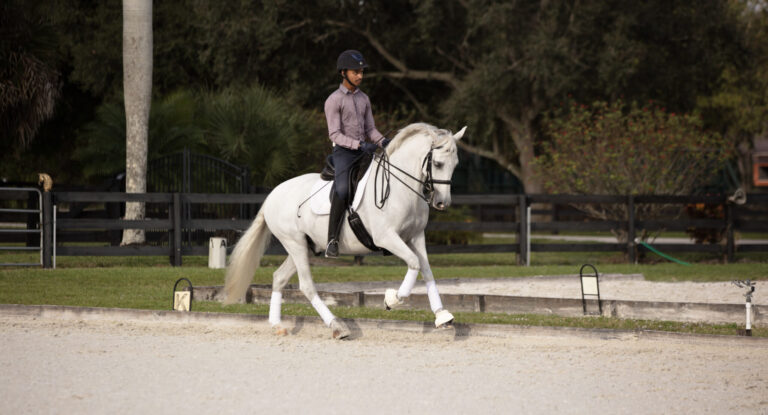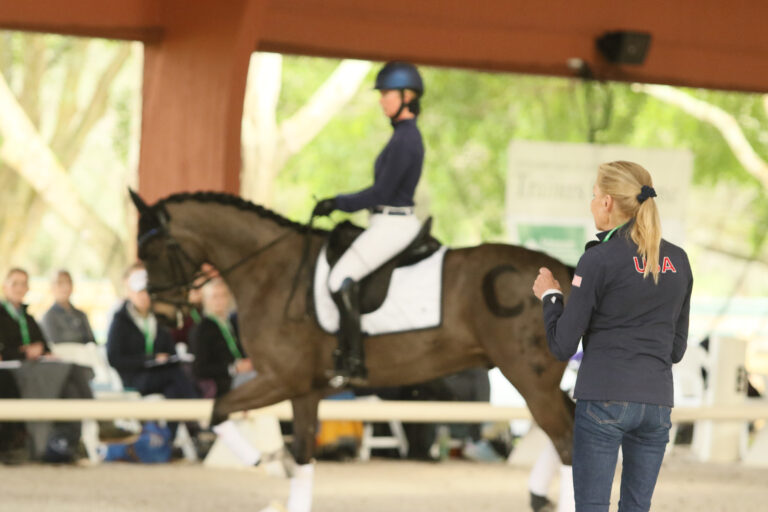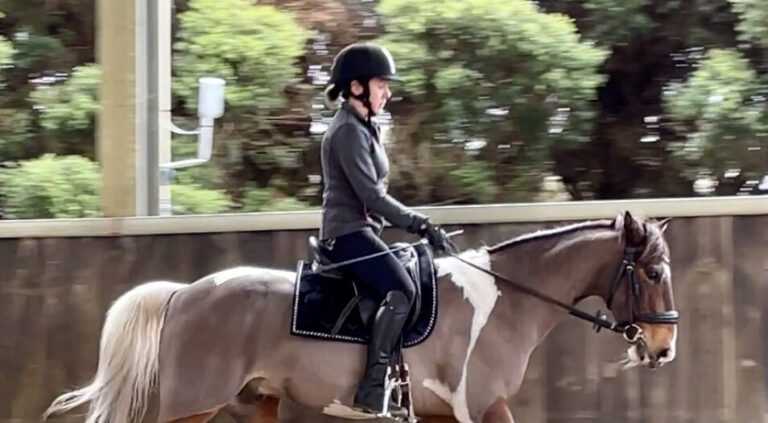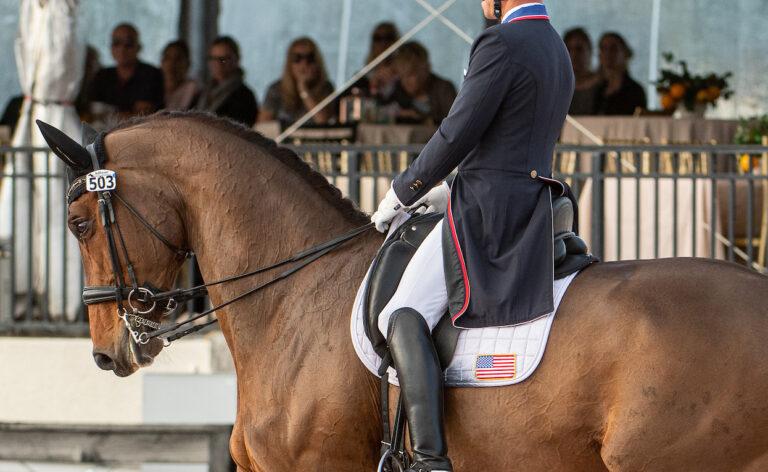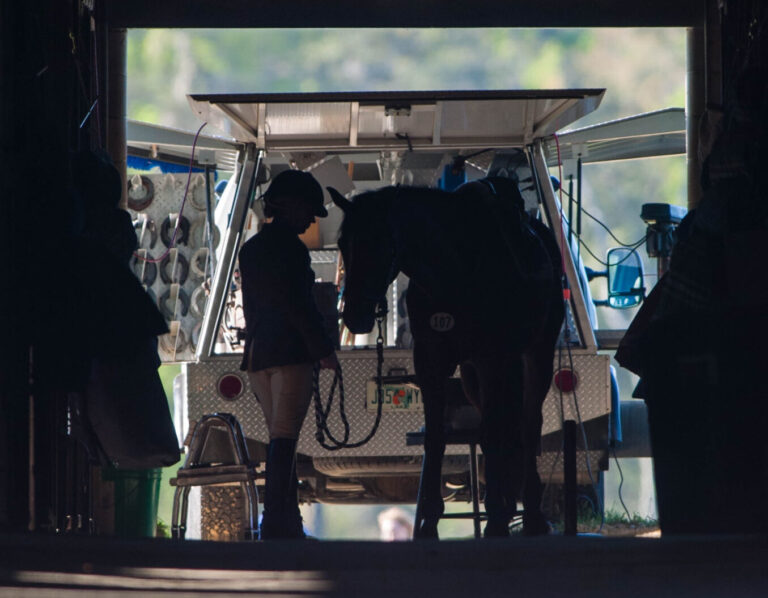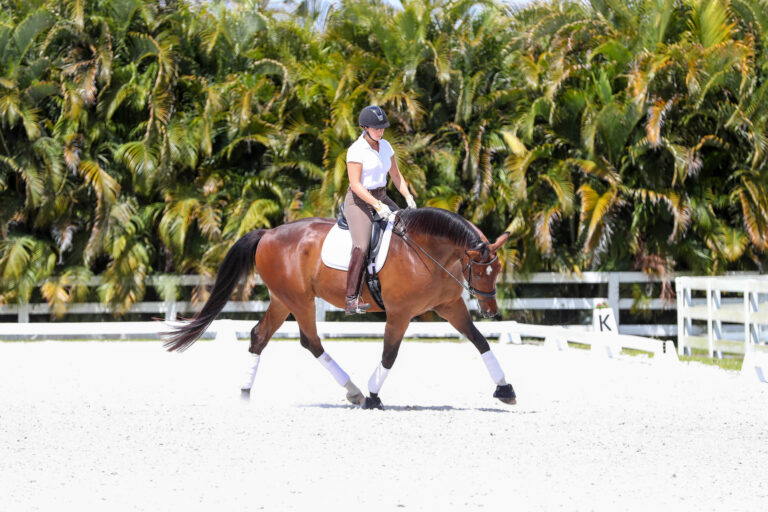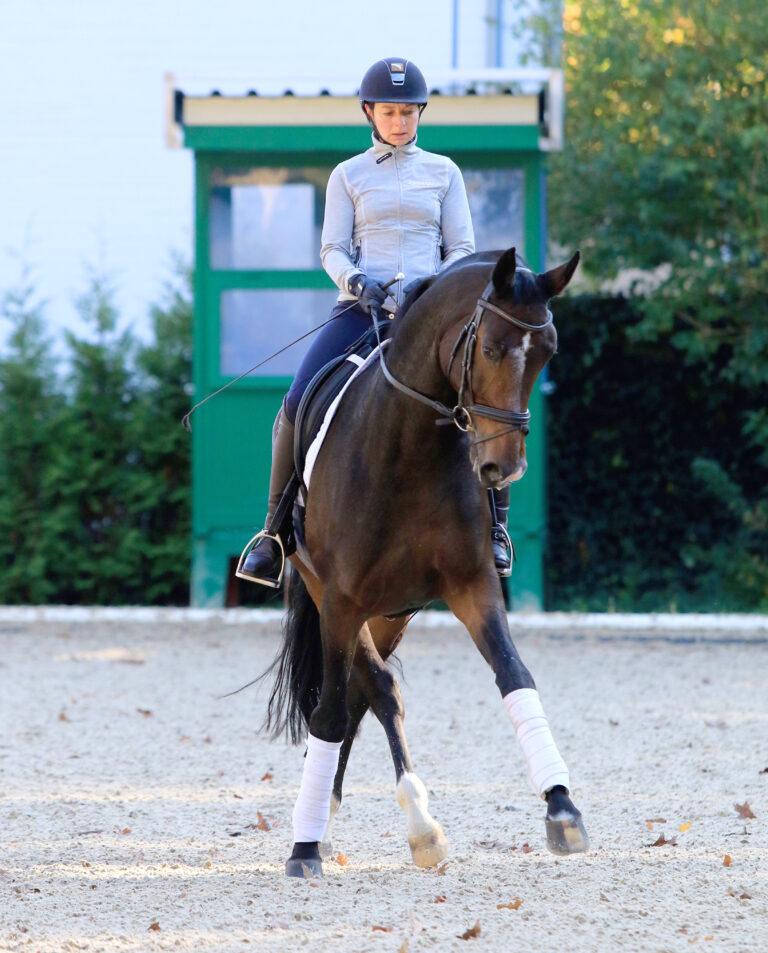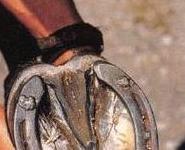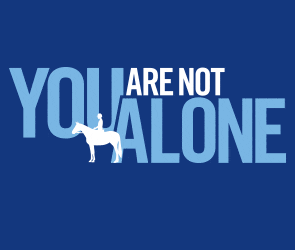Q: I am showing my horse at First Level. How do I know when I am riding him too short in the neck? Why is this incorrect and what do I do about it? —Name withheld by request
A: A short neck is not always recognizable from the saddle. Oftentimes, it looks OK to the rider since the horse’s neck is up and in front of her. But when viewed from the side, the horse is holding his neck up with his underneck muscles and not the lifting muscles of his topline. One doesn’t necessarily have to look at the neck to determine if something is wrong. A short neck often is merely an indicator that something else is lacking. It frequently indicates a problem in the connection and the early steps of the pyramid of training—rhythm, relaxation, seeking the contact. So when your horse has a short neck, regard it as an alarm bell going off in your training.

There are many variations of a short neck. To determine if your horse shortens his neck inappropriately, look for the following symptoms:
Symptom 1—Random shortening: A momentary—extremely brief and random—shortening, which we judges often see in horses during an up or down transition. Judges see this as a minor deduction. It usually happens in younger lower-level horses when they lose their balance or need more strengthening. It’s usually nothing to worry about.
Symptom 2—Behind the vertical: Sometimes the horse’s nose is behind the vertical when the poll gets too low. This has a shortening effect on the neck. Depending on the degree of the problem, the fault can be minor, moderate or severe. A horse hiding from the bit by curling for an extended period of time is seen as a severe fault. By comparison, it would be better to see the nose slightly in front of the vertical.
Symptom 3—Bracing at the base of the neck: Another symptom of a short neck is when the horse braces at the base of the neck with the lower neck bulging out and pushing forward. This fault happens in different degrees, from a slight bulge to a more severe bulge. It indicates that the horse is stuck—the energy isn’t flowing through the topline—and he is not properly reaching into the contact. In this position, it’s hard for him to get lateral flexion, meaning suppleness in the poll. Depending on the degree of the problem, this can be a minor, moderate or severe fault. If, however, you can show the judge that you notice the problem and are able to improve, it will have a positive effect in the rider score under effectiveness.
Symptom 4—Loss of tempo: Sometimes the horse is ahead of the rider, meaning the horse is in control of the tempo and speed. Loss of tempo oftentimes results in quicker strides. The rider is holding the horse back with backward actions of the reins. Since the rider has to pull on the reins to keep the horse from running, it results in a short neck, and is a back-to-front aid. This will be more severely punished.
If you encounter any of these symptoms, you can use these different exercises to help your horse reach into the contact.
Ride as if you were starting to ride a stretchy circle without really riding one. If you feel that your horse’s neck is starting to relax, stop; go no farther. Your goal is not to stretch down your horse’s neck but to get rid of the stuck feeling. When you feel stuck in the middle of a test, pretend you’re riding a stretchy circle without leaving your line of travel. Make sure you’ve got an elastic outside-rein contact. Sometimes the rider pulls back her outside shoulder too much, making it hard to develop the elastic outside-rein contact. The rein should feel like a bungee cord.
Let your horse stretch through überstreichen (moving both your hands forward a few inches), which breaks the cycle of leaning on one another.
Riding on a free rein with correct aids encourages the horse to stretch out and down while keeping the topline round. The horse should be allowed to oscillate his head and neck and not appear as if he has swallowed a two-by-four.
It is not a judge’s job to tell the rider what causes the problem. In any case, we can give some observations that tell the rider what may have led to the problem. We may not instruct her how to ride, but, as an example, if we see a rider leaning back too much, having the reins too long or elbows behind her upper body or see-sawing on the reins, we take note of it.
In the new tests, the rider’s score is divided into three different areas: one for the position of the rider, one for effectiveness and one for harmony. If you’re leaning back, for example, it would go into your position score.
This article first appeared in the February 2012 issue of Dressage Today magazine.
William Solyntjes is a USDF gold medalist and member of the USDF “L” Education Program faculty. A USEF “S” dressage and “R” sport horse judge, he chairs the USEF Test Writing Committee. Based in Hamel, Minnesota, he trains horses and riders at Brandywine Farm (brandywinefarm.com).


